Dog Training Tools And Equipment: What You Really Need
A well-trained dog starts with the right tools. Whether you’re teaching basic manners or refining obedience, the right gear makes all the difference.
Choosing the Right Tools for Positive Reinforcement Training
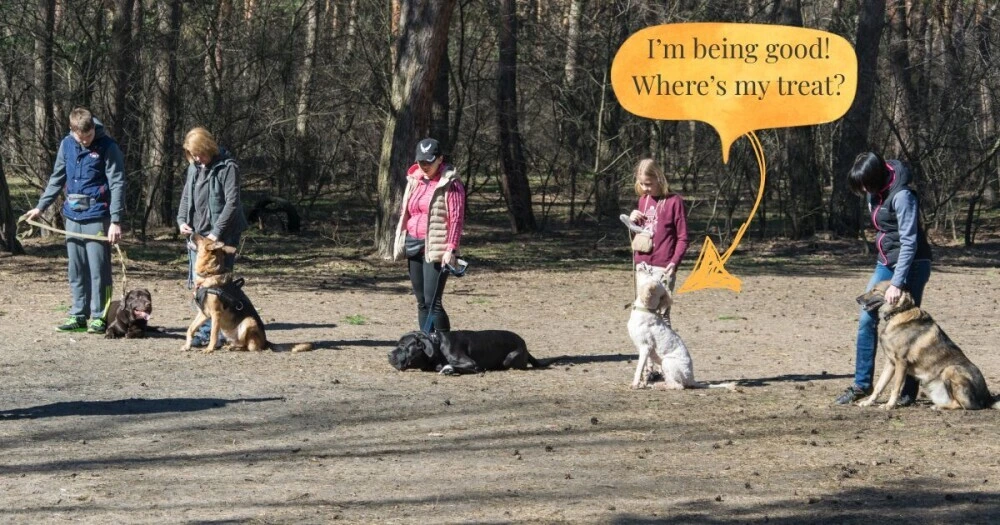
Having the right equipment makes training more effective, humane, and enjoyable for both you and your dog.
Training isn’t just about teaching commands—it’s about using the right tools to reinforce good behaviour and prevent bad habits. The right gear makes training clearer, more efficient, and safer for both of you. A well-trained dog is easier to manage, safer in public, and more confident in new environments.
Patience, consistency, and clear communication are key. Tools like treat pouches, leads, and harnesses help reinforce these principles. Mixed signals confuse dogs, so using the right equipment ensures your guidance is clear and consistent.
There are different training methods. Positive reinforcement, using treats and praise, encourages desired behaviours. It’s the most effective and humane approach, and tools like treat pouches and clickers make it easier. Traditional methods, like correction-based training, focus on discouraging unwanted behaviours. While some owners still use these, they require precise timing and knowledge to avoid negative effects.
The training environment also plays a big role. Distractions make learning harder, so start in a quiet space with the right equipment before introducing more challenging settings. Training in different locations helps dogs generalise commands and behave well everywhere. Tools like long lines and whistles can assist with training in open areas, reinforcing recall from a distance.
Essential Dog Training Tools
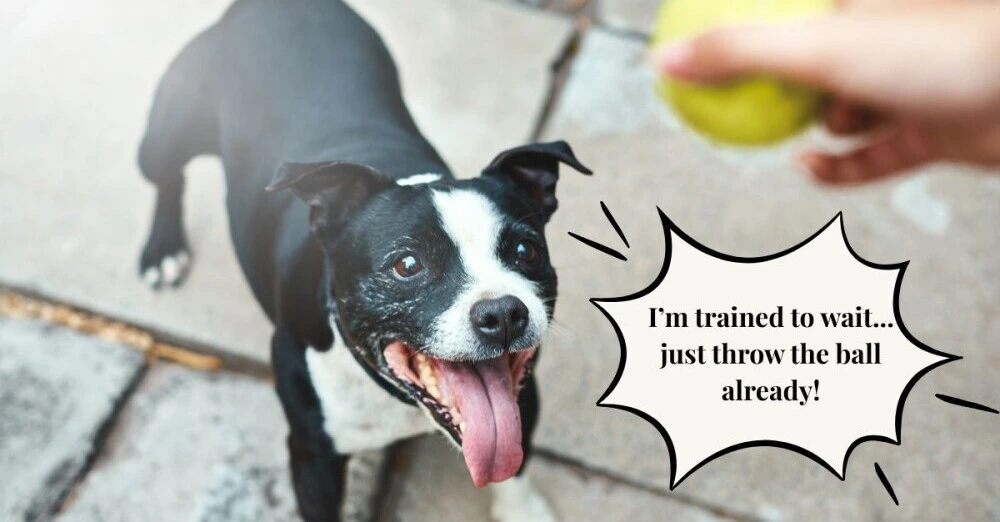
These are must-have items for everyday training and handling:
1. Collar with ID Tag
In the UK, it’s required by law that dogs wear an ID tag when in public (The Control of Dogs Order 1992). While the law isn’t strictly enforced, it’s still in place, even with the 2016 microchipping law. Choose a sturdy, comfortable collar that fits well.
If a collar’s optional for you, you may as well put an ID tag on it, because the original intention is to reunite lost dogs.
2. Lead (Leash)
A strong, reliable leash is essential for daily walks and training. Standard leads are best for general use. Rope leashes are helpful for strong pullers but can cause rope burn. Retractable leads are only suitable for small dogs and should never be used near roads.
Choosing the Right Leash and Collar:
The right lead depends on your dog’s strength and behaviour. A front-clip harness with a waist lead is ideal for strong pullers, like Staffies. It provides better control and reduces strain on your arms. For very powerful dogs, like Rottweilers, leash length matters. A long lead lets them gain speed, making it harder to control them. The shorter the lead, the more control you have. A sturdy, well-fitted collar or harness is essential for safety and training.
Getting this wrong can be painful!
I once used a retractable lead with my Staffy in a busy park. When he pulled, the lock failed, and I instinctively grabbed the cord to rein him in. The cords are wire and can break skin. I still have a scar from that incident. After researching it, I found multiple horror stories. I’d never recommend them for strong dogs.
3. Harness (Front-Clip for Pullers)
A front-clip harness helps control dogs that pull. It redirects their movement, making walks easier. We use a front-D-ring harness, and it’s been a game-changer.
4. Toys (Breed-Appropriate)
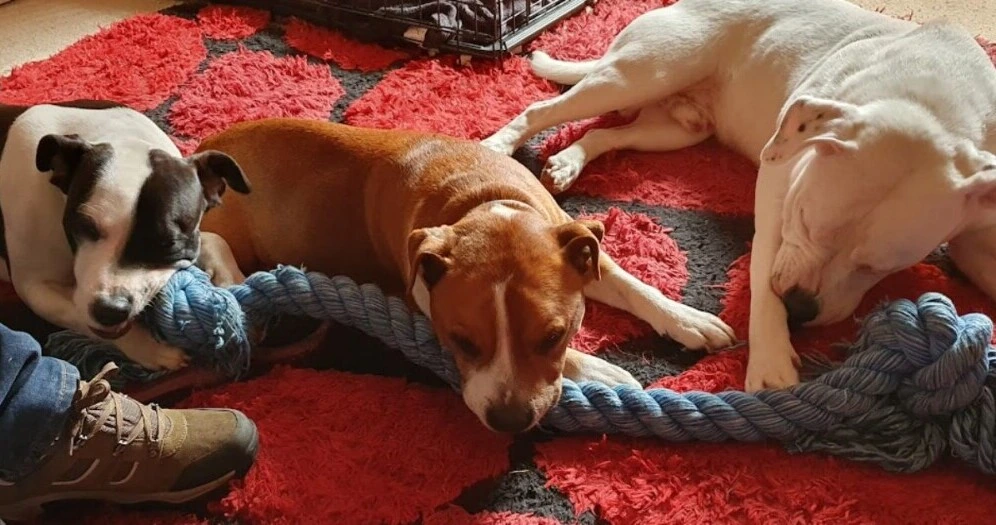
Dogs need something safe to chew or they’ll find their own options—like bedding or furniture. We keep a small basket filled with nylon chew toys, which are among the best durable dog toys for aggressive chewers. If they chew something they shouldn’t, redirect them to the toy basket.
Important: Never let them take toys into their crate until you’re confident it’s tough enough to not break apart. They can present a choking risk, especially for heavy chewers.
5. Slip Lead
This is a collar and lead in one. It’s great for training and guiding your dog—especially useful for leading them to the shower without a chase. But it must be used correctly: high on the neck, not low where it can choke.
6. Crate (Optional Cover)
A crate provides a safe space for your dog. It’s helpful for house training and giving them a place to relax. Some dogs feel more secure with a cover over their crate.
7. Hands-Free Lead (Waist Leash)
For a comfortable walk, consider a hands-free lead. We use the EzyDog Vario 6—it made a huge difference, reducing arm strain when our dogs pulled. Paired with a front-clip harness, it works well for better control.
8. Treat Pouch
A treat pouch keeps rewards handy and improves training efficiency. Quick access to treats reinforces positive behaviours in the moment, helping your dog learn faster. Some people use bum bags, but I prefer a shoulder bag / crossbody bag. It has more space for essentials like poo bags, tick removers, my phone, and gloves.
Why It Works: Our dogs know the bag contains their treats. When I reach in and give the “on” command, (an essential command to teach your dog) they walk by my side, expecting a reward. It’s all about association—once they connect the bag with rewards, training becomes easier and more effective.
Optional Training Tools
These tools aren’t essential but can help in specific situations:
Head Collar
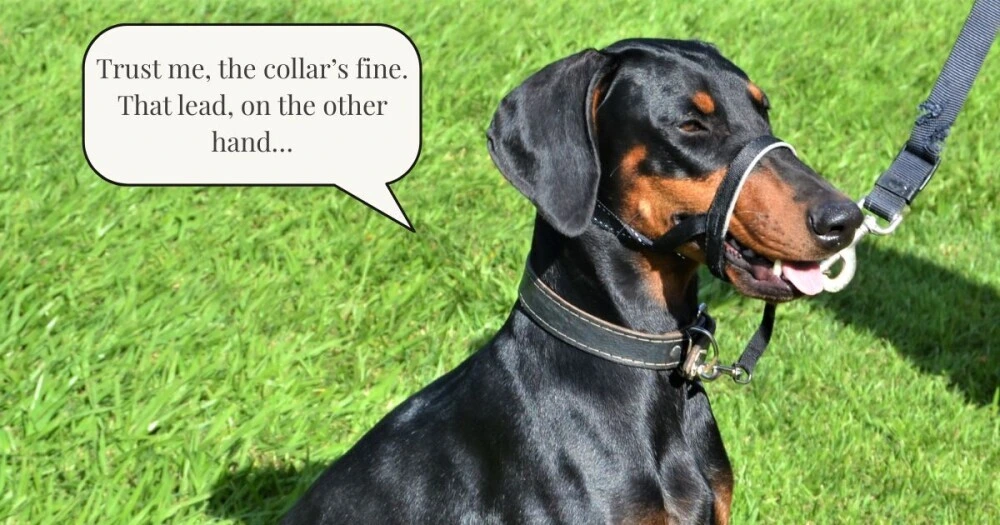
A head collar helps control strong pullers by guiding their head movements. It’s also called a head halter, Halti collar, anti-pull head collar, or dog nose lead. While they can be great for stopping pulling, I see them as a training aid rather than a must-have. Dogs need time to get used to them, and proper fitting is crucial.
Dog Whistle
Useful for long-distance recall, especially in open areas. A whistle is consistent and carries farther than your voice. While it’s not something you’ll need every day, it’s good to know this option exists for recall training in large spaces.
Safety Considerations and Ethical Training Practices
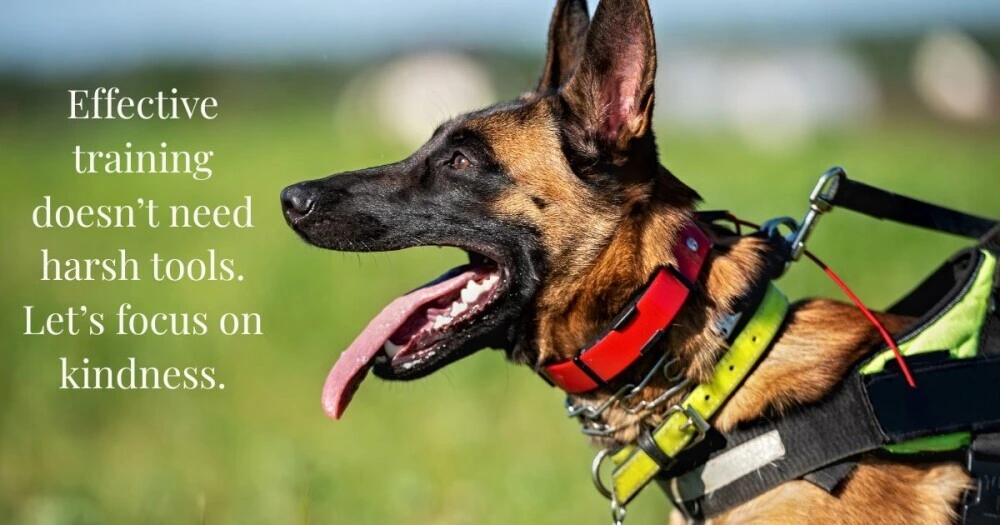
Not all training tools are safe or appropriate. Some can harm your dog if used incorrectly. Choker chains, when placed too low on the neck, can choke a dog rather than correct behaviour. Retractable leads pose risks if the locking mechanism fails, giving a strong dog too much control. Even some toys can be dangerous—small pieces or brittle materials increase choking risks, especially for aggressive chewers.
Some training tools spark controversy. Prong collars and e-collars (shock collars) are often debated. While some argue they provide quick corrections, others believe they can cause stress and fear. Ethical training prioritises positive reinforcement over force. The goal is to build trust, not fear.
When introducing new equipment, focus on comfort and safety. Let your dog explore and get used to new gear before using it in training. Check fit and function to prevent discomfort or injury. Training should always be about guiding and rewarding—not punishing.
Final Thoughts
The right training tools make life easier for both you and your dog. Start with the essentials—collar, lead, harness—then add items based on your needs. Every dog is different, so find what works best for yours.

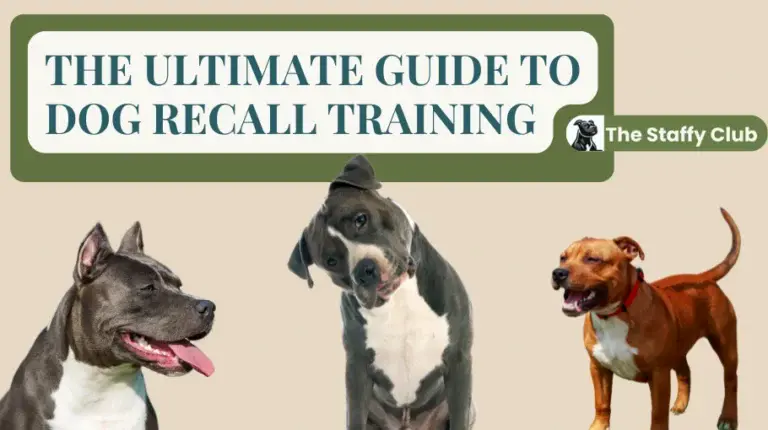
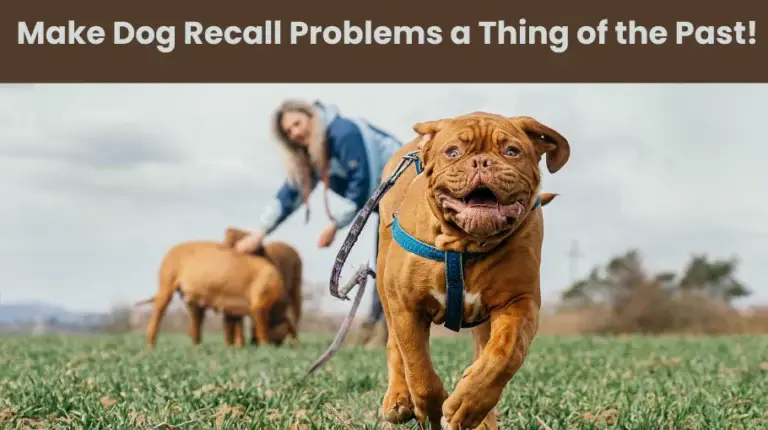
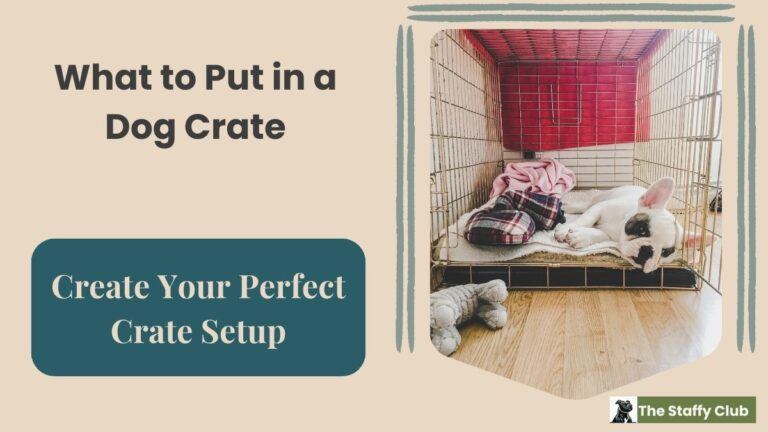

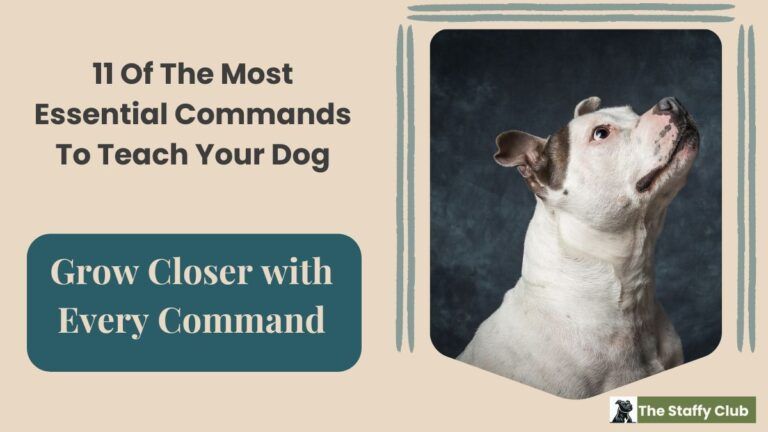
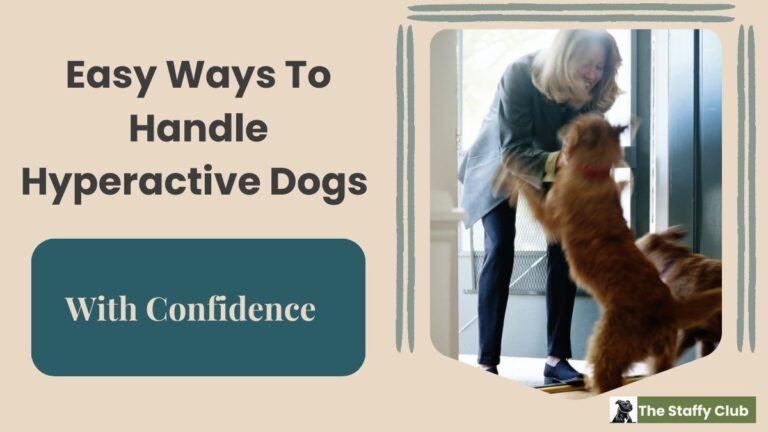
I really appreciated the way you broke down the essential dog training tools in such a practical and honest manner. Your personal story about the retractable lead was a powerful reminder of how crucial it is to prioritize safety over convenience. It got me thinking about how even the smallest details like choosing a front-clip harness or using a treat pouch can make a big difference in both a dogs behavior and our overall training experience. Thanks for sharing such a thoughtful, real-world perspective on how the right equipment not only enhances training but also deepens the bond with our furry friends.
Thanks, Dan. Appreciated. Those retractable leads can be horrendous, and yeah, the smallest details can make a difference. Like, in the case of the front clip harness, it wasn’t a new harness. It was a D-Ring attached with velcro onto their existing harness. The cheapest upgrade changed the experience completely.